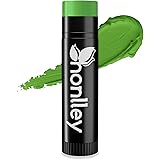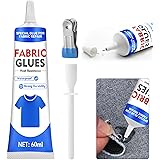Unlock Your Inner Handyman: Practical DIY Repair Tips and Creative Tool Hacks
Many homeowners and renters often face the frustration of minor household repairs. A wobbly chair, a scratched surface, or a malfunctioning tool can quickly turn a peaceful afternoon into a day of exasperation. However, tackling these issues doesn’t always require calling a professional; with the right approach and a bit of ingenuity, you can often resolve them yourself.
The accompanying video offers a glimpse into clever, budget-friendly solutions for common household problems. This article builds upon those visual demonstrations, providing deeper insights and practical advice to help you implement these effective DIY repair tips and creative tool hacks in your own home.
Embracing Resourcefulness for Effective Home Repair Tips
A core principle of successful DIY is resourcefulness. Instead of immediately purchasing new tools or materials, consider how existing items can be repurposed or modified to solve a problem. This not only saves money but also fosters a deeper understanding of your home and its maintenance needs.
For instance, simple household items like baking soda or even a pool noodle can become indispensable tools in unexpected situations. Consequently, cultivating a mindset of innovation can transform daunting repair tasks into manageable projects. With the right approach, even complex challenges can be broken down into simpler, actionable steps.
Ingenious Tool Hacks and Their Applications
The video demonstrates several clever modifications and uses for tools that can significantly streamline your repair efforts. Understanding these creative tool hacks can truly expand your DIY capabilities. One notable example is the flexible bit, which allows access to screws and fasteners in tight, awkward spaces where standard drills cannot reach.
Furthermore, consider improvising solutions for specific needs. If you’re looking for an “easy way to make a door handle” or a temporary fixture, simple materials can often be combined effectively. For example, a sturdy piece of wood or even a repurposed plumbing fitting can be adapted with a little drilling and securing. Similarly, maintaining your existing tools is paramount; the video highlights an “easy way to clean belt sander machine” residue, which extends the life and efficiency of your equipment. A common method involves using a rubber cleaning stick or even a simple crepe sole brush against the moving belt to dislodge built-up material effectively.
Creative Material Applications for DIY Success
Sometimes, the solution to a problem lies in the innovative application of common materials. The video showcases several such instances that highlight their versatility. For example, acetone’s ability to dissolve styrofoam is a useful tip for specific craft projects or when dealing with foam-based adhesives.
Moreover, the combination of super glue and baking soda creates an incredibly strong, fast-setting filler that can repair breaks and fill gaps with remarkable effectiveness. This chemical reaction forms a hard, durable plastic-like material, proving far more robust than super glue alone. It is especially useful for mending broken plastic components or reinforcing weak joints. Another smart application involves using a “pool noodle” to protect delicate surfaces or edges from scratches, providing a soft, resilient barrier during moving or construction tasks. Its flexible nature allows it to conform to various shapes, offering excellent impact absorption.
Essential Repair Materials and Their Practical Uses
Beyond innovative hacks, understanding the proper application of fundamental repair materials is crucial for any DIY enthusiast. Wood glue, for instance, forms strong, lasting bonds when applied correctly to wooden surfaces. It’s important to clamp the pieces together securely while the glue cures to achieve maximum strength.
Additionally, heat shrink tube offers a clean and professional way to insulate wires, repair frayed cables, or create a “strong connection” that is resistant to environmental factors. When heat is applied, the tube shrinks tightly around the object, providing protection and strain relief. Sandpaper, available in various grits, is indispensable for preparing surfaces, smoothing rough edges, and achieving a professional finish on painted or varnished items. Always start with a coarser grit to remove material quickly, then progress to finer grits for a smooth final surface.
Safety First: A Foundation for All DIY Repair Tips
Regardless of the simplicity of the task, safety should always be your top priority when engaging in DIY activities. The video wisely emphasizes “EYE PROTECTION!” and provides a general disclaimer about caution. Always wear appropriate personal protective equipment (PPE) such as safety glasses, gloves, and hearing protection as needed.
Before beginning any project, take a moment to assess potential risks and ensure your workspace is well-lit and free of clutter. Furthermore, always read and follow the instructions provided with any tools or materials you are using. Consequently, by prioritizing safety, you can confidently tackle various DIY repair tips and home improvement projects, ensuring both your well-being and the successful completion of your tasks.







